Big Ego, big Achievement?
Whoever reaches the summit first wins. This is how alpine history has been written since its beginnings. The heroes and heroines are only those who made the summit. Could it be time for a change of perspective? During this Bayern2 Night, we will watch films about big egos and great personalities and strike up a conversation about them.
Guests at the historical Barocksaal venue are Rita Christen, President of the Swiss Mountain Guide Association, the famous Alpinist Caro North, Alpincoach Nina Schlesener and Katharina Kestler from the Bavarian public podcast Bergfreundinnen (Girlfriends in the Mountains) and other prominent mountain personalities.
We discuss why humans risk so much just to be at the top. Whether turning back can also trigger happiness. And whether the greatest achievement of all might not be the overcoming of big ego.
Moderation: Achim Bogdahn and Julia Zöller, Bayern2
Egoland
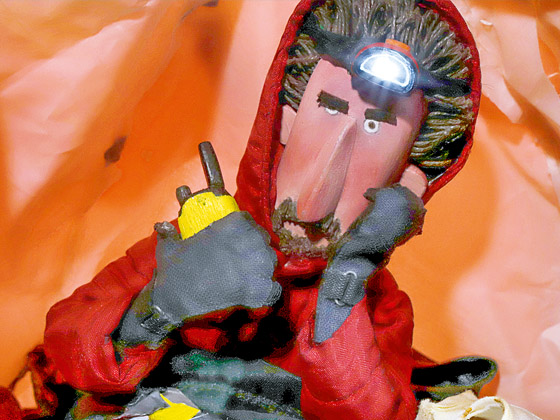
Egoland
Marek Molek and Bruno Grassi are about to reach the summit of the “Great Troll”, the last and most difficult unclimbed mountain. A violent storm, exhaustion and poor snow conditions prevent them from reaching the top. While they argue about whether they should stand by the truth, special correspondent Mike Bacon fails to make contact with them and waits anxiously at base camp.
In 2018 the director received a Special Mention by the Jury for Viacruxis.
Rita Christen – erste Präsidentin des Bergführerverbandes (Rita Christen – First President of the Swiss Mountain Guide Association)
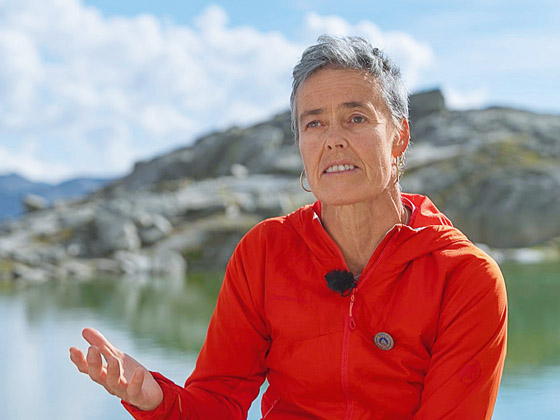
Rita Christen – erste Präsidentin des Bergführerverbandes (Rita Christen – First President of the Swiss Mountain Guide Association)
Only 2.5 percent of Swiss mountain guides are women. There are exactly forty of them and Rita Christen is among them. Two years ago, the association elected her president. Lawyer, mountain guide, yoga teacher and much more – Rita Christen is a lively, non-conformist woman with a deep passion for the mountains. The cinematic portrait grants an insight into her work and private life and what motivates her.
Queen
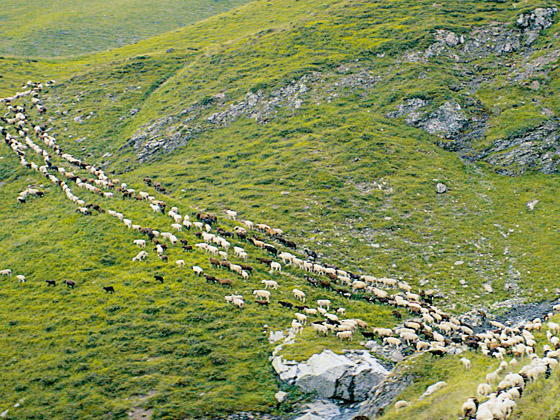
Queen
A shepherdess awakes from a dream. In it, she saw a wolf approaching her herd. She devotes herself entirely to her work and looks after her sheep all summer long on a remote alp in Switzerland, completely exposed to nature and with great responsibility for the well-being of the herd. With binoculars, she searches the ridges of the surrounding mountains for the predator whose proximity she feels. When she finally comes face to face with the wolf, Queen, everything changes … A film about the relationship between humans and animals, about instincts and humility.
Among high-altitude mountaineers, Nanga Parbat is considered one of the most difficult and dangerous eight-thousanders. Since the 1930s, it has been considered the “German mountain of fate” since more than 30 people died there during several expeditions. No Himalayan peak is as closely associated with German expedition mountaineering as this “naked mountain”. In 1953, a German-Austrian expedition organised by physician Dr Karl Maria Herrligkoffer from Munich departed against great resistance from the “old expeditionist guard”, and on 3 July 1953, its member Hermann Buhl from Innsbruck reached the summit in a legendary solo effort.
On the occasion of the anniversary, excerpts from Hans Ertl’s great documentary film will be shown – and might strike the modern viewer as quite laden with pathos. As a second film, we bring back the Great Prize of the 2005 Mountain Film Festival and welcome its maker Gerhard Baur as well as David Göttler, who had to abandon an attempt at Nanga Parbat just last spring.
Nanga Parbat 1953
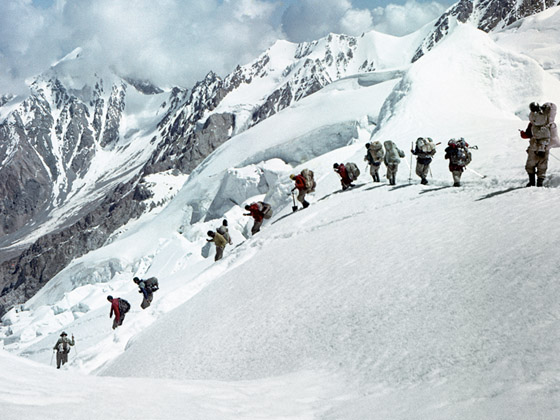
Nanga Parbat 1953
Excerpts from the original expedition film. In the 1930s, Hans Ertl was one of Germany’s top mountaineers. He was first hired for a shoot by mountain film pioneer Dr Arnold Fanck in 1932. In 1936, he worked as first cameraman on Leni Riefenstahl’s Olympics film. As a cameraman and director, he accompanied the 1953 Nanga Parbat expedition.
In 1954, his documentary film received an Honourable Mention from the German Film Awards.
Nanga Parbat - Der tödliche Berg
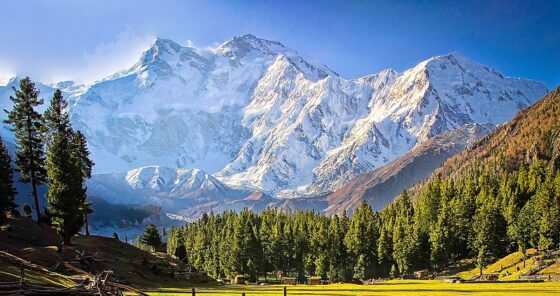
Nanga Parbat - Der tödliche Berg
Unter Bergsteigern gilt der Nanga Parbat als einer der schwierigsten und gefährlichsten Berge überhaupt. Gerhard Baur war an der Diamirseite des Nanga Parbat unterwegs, als der 64-jährige Günter Jung auf dem Rückweg vom Gipfel in die Tiefe stürzt. Sein Freund Markus Walter will helfen, steigt ab in unbekanntes Gelände und erlebt eine Odyssee, die ihn an die Grenzen seiner ps chischen und physischen Leistungsfähigkeit bringt.
Der Film erhielt 2005 den „Großen Preis der Stadt Tegernsee“.
Captains On El Cap
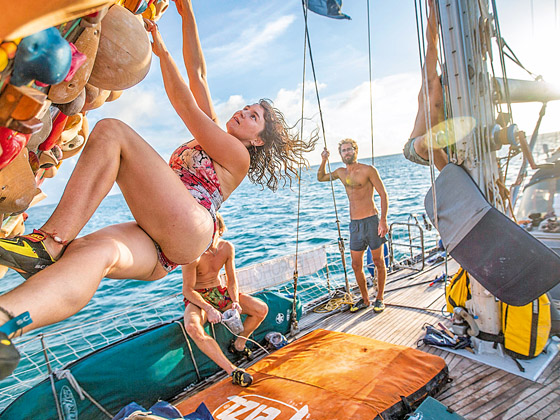
Captains On El Cap
Six passionate climbers and two sailors unite for a unique six-month adventure. The goal? To cross the Atlantic Ocean and the North American continent so as to climb the wall of their dreams – all while having as little impact on the environment as possible. Together with a dog, they sail to America and master the challenge of carrying out a sports expedition of great magnitude without booking a single air mile. Their main destination is famous El Capitan in California’s Yosemite National Park.
Air Karakoram
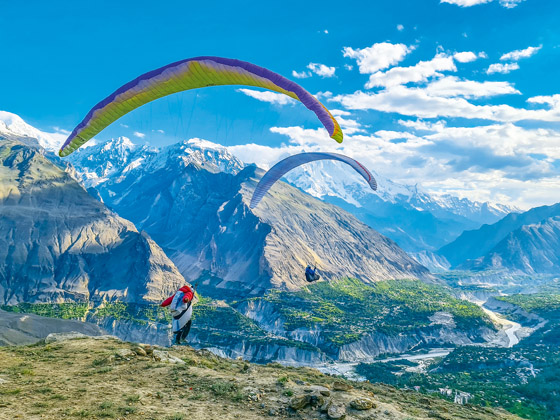
Air Karakoram
Seven crazy friends set off for Pakistan. Their ingenious idea: summiting on Himalayan peaks via paraglider and having lots of fun while they’re at it. The scheme is simple – paragliders will allow them to reach high altitude mountains while getting acclimatised at the same time. And in order to kill two birds with one stone, they also try to break the world altitude record in paragliding by flying above 26,200 ft (8,000 m).
The last Skiers
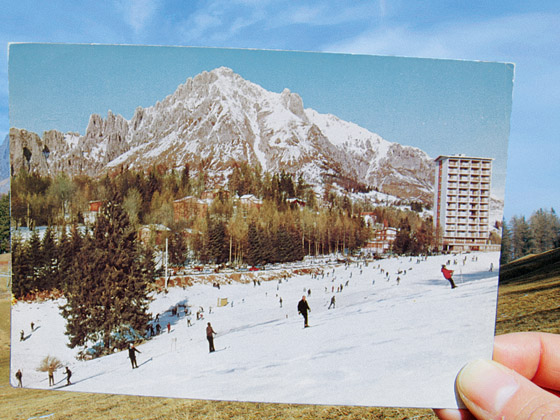
The last Skiers
In 2023, the warmest January temperatures of all times were recorded in eight European countries, including the Alpine region. Researchers predict a decline in the amount of Alpine snow volumes by more than 53 percent. The majority of people seems to believe that snow-free winters are rather to be expected in the distant future than already happening. The filmmaker has met skiers who learned this sport as children on white slopes where today only green hills roll. Their memories are a valuable collective testimony regarding a fragile mountain world worthy of protection.
This retrospective is dedicated to three important personalities of mountain film: firstly, the genre’s pioneer, secondly the founder of the Tegernsee Mountain Film Festival and thirdly the initiator of the German mountaineering show Bergauf-Bergab (Up and Down the Mountain).
ARNOLD FANCK
In Eis und Schnee – Der Regisseur Arnold Fanck (In Ice and Snow – Film Director Arnold Fanck)
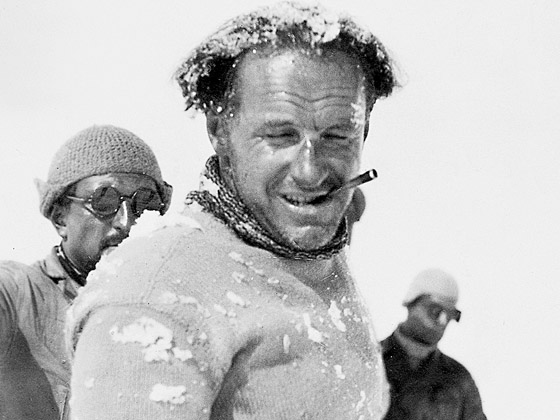
ARNOLD FANCK
In Eis und Schnee – Der Regisseur Arnold Fanck (In Ice and Snow – Film Director Arnold Fanck)
When did mountain film come into being? The first moving images of mountaineers on Mt Matterhorn were shot in 1901. Soon, the big screen also showed people on Mont Blanc, the Jungfrau and the Tre Cime, but all this was purely about entertainment – with the mountains as mere backdrop. Mountain film developed as a genre in its own right at the beginning of the 1920s. Its trend-setting initiator was Dr Arnold Fanck, a geologist from Freiburg and a passionate skier and mountaineer. The tale of how he founded the mountain film genre is narrated by Munich-born film producer Hans-Jürgen Panitz.
Ein Rucksack voll Erinnerungen – Auf den Spuren großer Bergsteiger (A Backpack full of Memories – in the Footsteps of Great Mountaineers)
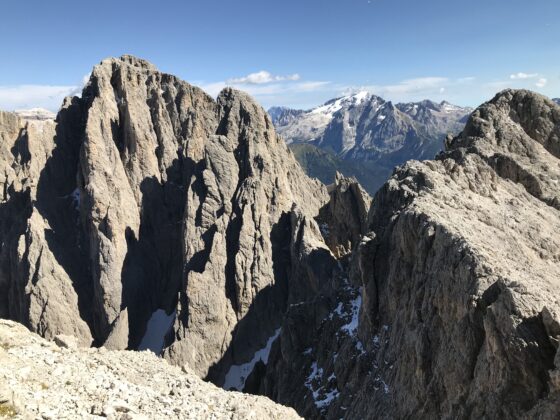
Ein Rucksack voll Erinnerungen – Auf den Spuren großer Bergsteiger (A Backpack full of Memories – in the Footsteps of Great Mountaineers)
Dr. Otto Guggenbichler, the Tegernsee Mountain Film Festival’s initiator, not only grew up among the Tegernsee Valley mountains, but also loved to embark on mountain tours and to immerse himself in the history and evolution of modern alpinism. As a geographer with a passion for his homeland, he produced numerous films about the Alpine region. While doing so, he observed the expansion of transport routes throughout the Alps as well as the development of tourism. Finally, he was also in charge of mountaineering topics as an editor for Bavarian Public Broadcasting (BR), including this iconic 1976 film.
HERMANN MAGERER
Gewalttour über die Zugspitze (Tour de Force across Mt Zugspitze)
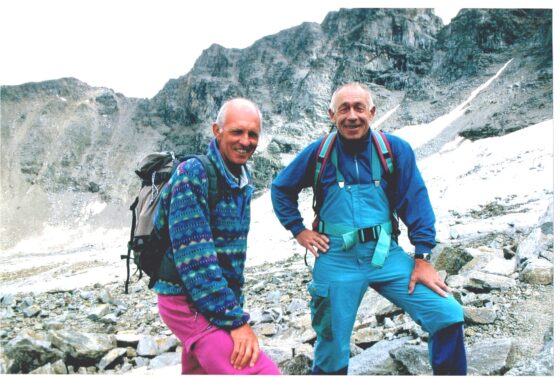
HERMANN MAGERER
Gewalttour über die Zugspitze (Tour de Force across Mt Zugspitze)
A bold dream, a good idea, a convincing concept and a dash of sophistication – with these ingredients Hermann Magerer successfully brought the mountaineering programme Bergauf-Bergab (Up and Down the Mountain) into being on Bavarian public television. He was authentic and competent – people believed what he said about the mountains and mountaineering. Mount Zugspitze was regularly on the show, for example in this 1988 film about a tour de force on Germany’s highest peak.
This bygone March, the cult show’s founder died at the age of 87.
Guardián del Valle – Volcán Tupungato (Guardian of the Valley – Tupungato Volcano)
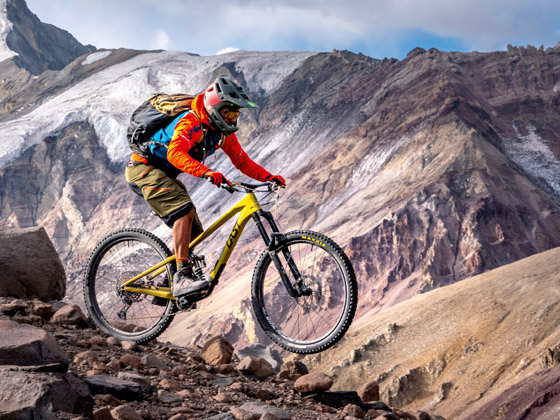
Guardián del Valle – Volcán Tupungato (Guardian of the Valley – Tupungato Volcano)
Tupungato is a volcanic peak which towers at 21,555 ft (6,570 m) on the border between Chile and Argentina – an extremely remote and difficult to access place. A team of Italian and Chilean mountain bikers undertakes an arduous ascent to the summit whence to attempt the first descent on wheels. Their nine-day expedition not only pushes the group to their physical limits, but allows them to discover one of the wildest and most wildly beautiful areas in the Andes.
Free Rider
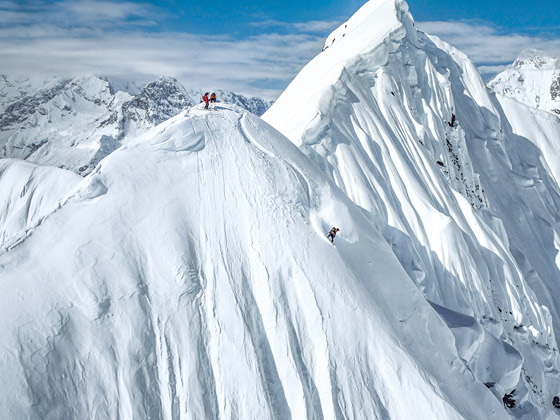
Free Rider
Sam Anthamatten and Victor de Le Rue conquer new territories in the wildest corner of Alaska. A bush pilot sets the five-person crew down on a remote, unexplored glacier to climb and then ski down a whole series of spectacular steep flanks for the very first time. The narrator, Jérôme Tanon, describes honestly but with a touch of sarcasm what they are up to. Above all, he tries to put himself in their skit boots in order to understand what the meaning and beauty of freeriding really is.
7 Summits of the Alps
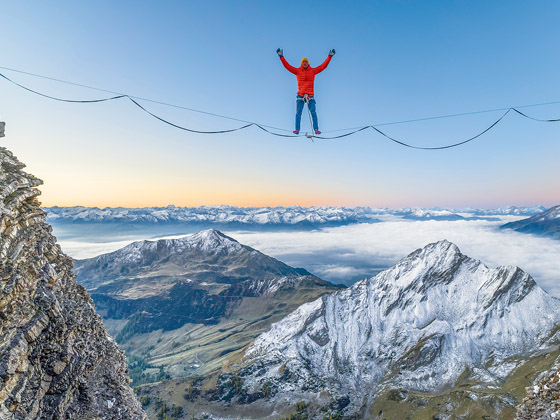
7 Summits of the Alps
Lukas Irmler has a special motivation to climb the seven highest summits of the Alps. Reaching their peak is only part of the goal – setting up and crossing a slackline near them is the next stage. The journey begins at Mt Zugspitze and leads via France to Slovenia. The highest peaks of the Alpine countries hold potential for spectacular highlines, but turn out to present even more serious challenges than expected.
In 2021, Valentin Rapp received the Otto Guggenbichler Young Talent Award for his film Alpine Highlines – Dolomiten (Alpine Highlines – Dolomites).
Aufnahmen einer Wetterkamera (Weather Cam Recordings)
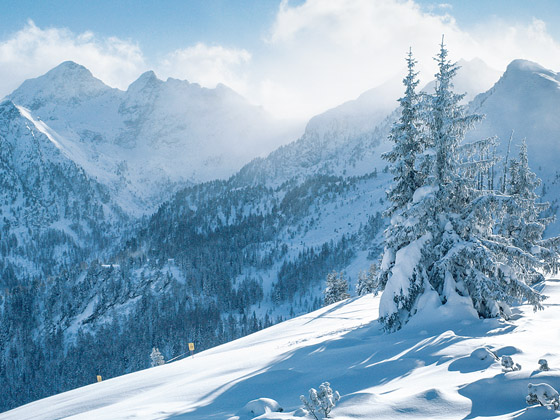
Aufnahmen einer Wetterkamera (Weather Cam Recordings)
Places of longing charged with high expectations are usually found just a snowball’s throw from disappointment. This also applies to ski destinations surrounded by fantastic mountain panoramas. While the image boundaries of a webcam robotically pan back and forth, interpersonal stories evolve in the foreground and social boundaries are casually transgressed. An edgy film about all-too-familiar encounters and the tragedy nascent in what seems harmless – a painfully realistic, but also humorous episodic mockumentary.
Die Hoch-See-Eis-Schwimmer (High Altitude Ice Swimmers)
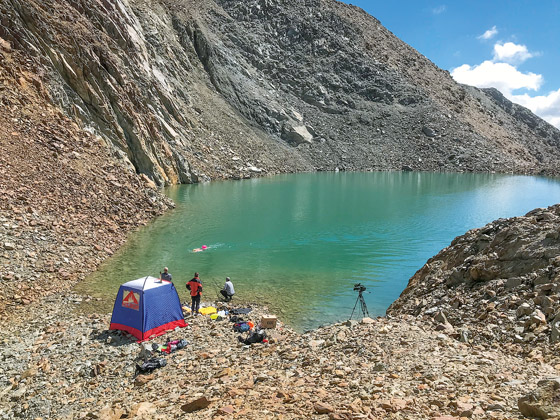
Die Hoch-See-Eis-Schwimmer (High Altitude Ice Swimmers)
Ice swimming is a frosty pleasure. For some people from the area around Lake Tegernsee, however, it is utter bliss. They take this notion to the extreme when an excursion to the Val Senales Glacier revolves around a record: ice swimming at an altitude of almost 10,826 ft (3,300 m). Here, the water temperature is definitely cold enough and the air a good bit thinner than in the lowlands. Climate change is not only melting glaciers in the high mountains, but also creating new lakes in cirques and hollows.




